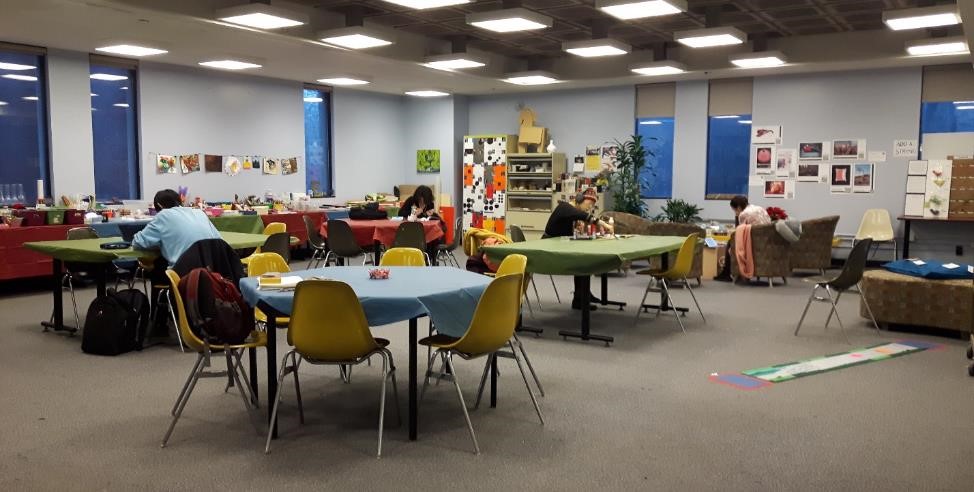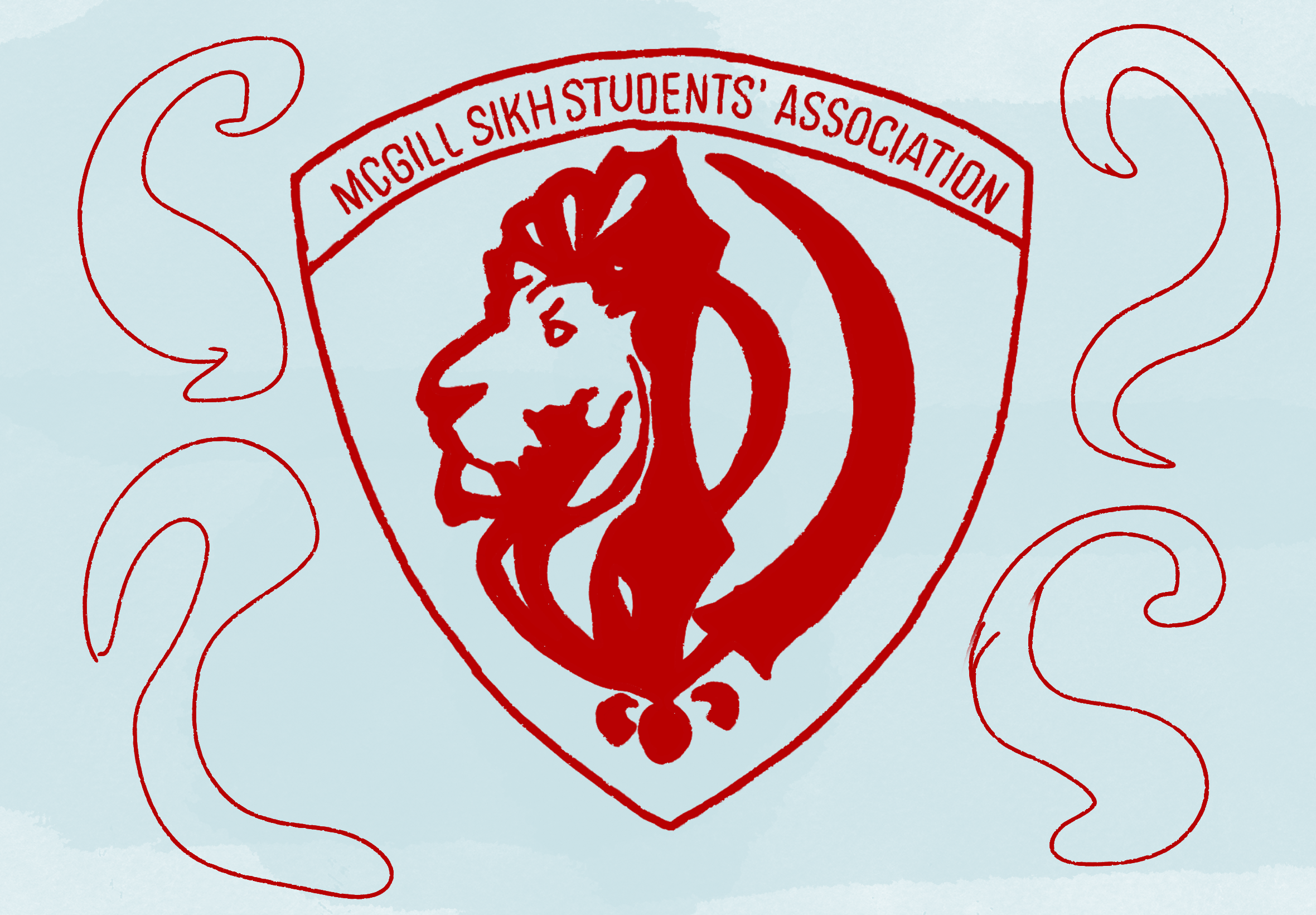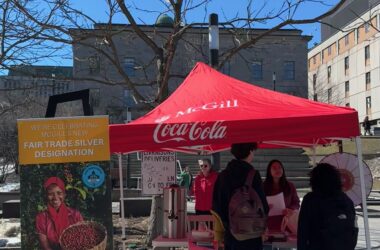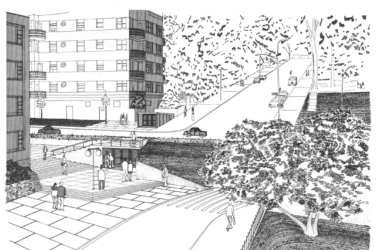In response to the overwhelming amount of stress students face in the final weeks of the semester, the McGill Students’ Chapter of Jack.org hosted a Paint Party on March 29. The organization, a Canada-wide charity that works to empower and train youth leaders to combat the stigma surrounding mental health, planned the event to create a space for students to relax and engage in a creative activity that stimulates the brain and promotes self care. By the event’s conclusion, participants had painted a mural which will be displayed in the Education Building.
Several students gathered in the McGill Art Hive, where facilitators distributed large pieces of paper for individuals to paint images they associated with positive mental health. Some depicted flowers and landscapes, while others wrote quotes or words that empower them. The facilitators hoped that, once displayed, the painting would encourage those who see the mural displayed on campus to reflect on their own self-care practice and find inspiration in the quotes on the wall.
“It isn’t just about getting the best grades,” Jennifer Ower, U3 Arts, said. “It’s about making sure you are a happy and healthy person first, before you’re a good student. The conversations that start today, as well as the ones that will come about after we hang the mural, will be important, because [at Jack.org we] are all about having those conversations, even if it’s hard to start.”
Julia Caddy, U1 Arts, and Ower are co-vice presidents outreach for McGill’s Jack.org chapter and were the organizers of the paint party. Their goal was to promote mental health awareness and introduce students to the McGill Art Hive, a free space in the Education Library that gives students access to a quiet space with a variety of art supplies.
“So many students don’t know about this space,” Ower said. “People often think if they want to do art therapy they need to buy all the supplies and find a place where they can do it. This is here, it’s free […] and such a great space.”
Research has found art therapy to be beneficial to most people, as it promotes self-expression, independence, and can allow for one to non-verbally convey emotions. Additionally, those who partake in art therapy often find that it helps build self-confidence and improves communication skills. With these benefits in mind, the staff encouraged participants who previously did not know one another to gather to share their ideas and create one collective mural by combining their smaller, individual works. The Jack.org team believes this practice is beneficial in more ways than one.
“[Creating] art is such an easy way to practice self-care,” Caddy said. “If we can provide the supplies, it’s the kind of thing where you can just drop in, take your time, and express yourself both by talking to the people around you and by creating art. So, to us, it’s the perfect combination of self-care [and] thinking and talking about wellness but also relaxing and doing something fun.”
During the event, students painted while enjoying free snacks, listening to music, and getting to know their peers. While creating their work, participants discussed plans after university and popular television stars. Caddy and Ower sat and painted alongside the attendees and spoke to the group about their work within Jack.org and their goals moving forward.
“Our hope is to create a space where students can come to take a break and also be productive because they’re focusing on their wellness which, arguably, is the most productive thing you can do this time of year,” Caddy said.
By the end of the night, organizers strung the colourful designs together to create a larger mural to be hung in the Art Hive, and, hopefully, spark conversations about mental health and wellbeing.
[contact-form][contact-field label=”Name” type=”name” required=”true” /][contact-field label=”Email” type=”email” required=”true” /][contact-field label=”Website” type=”url” /][contact-field label=”Message” type=”textarea” /][/contact-form]










Just a note – the term Art Therapy quite specifically relates to work done with a trained art therapist, like work done with a psychologist or counsellor. What is described here is Art as Therapy. It can be useful and important, but it is not art therapy.